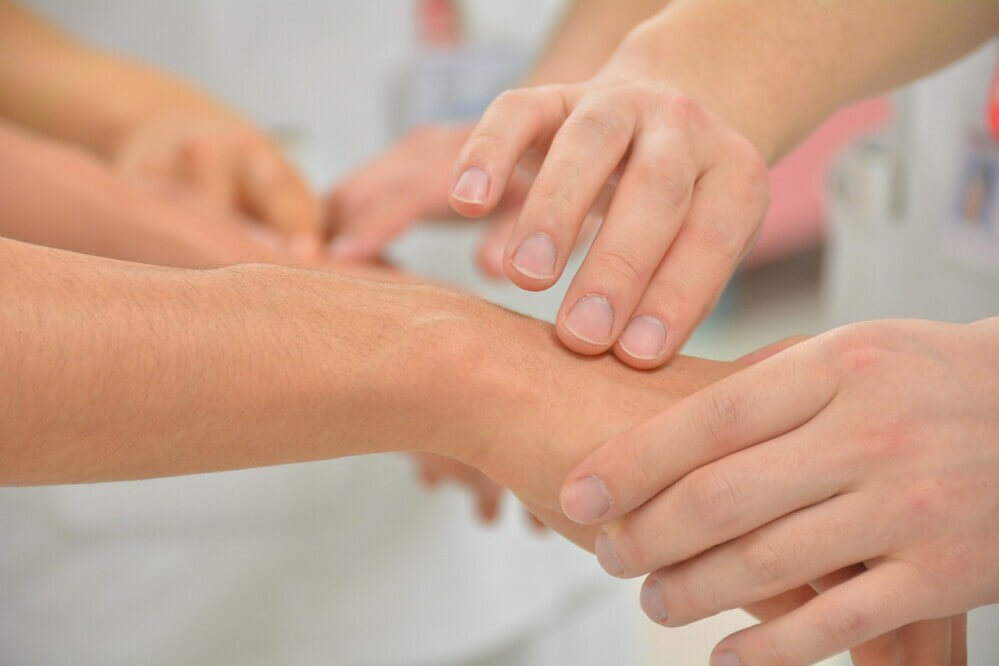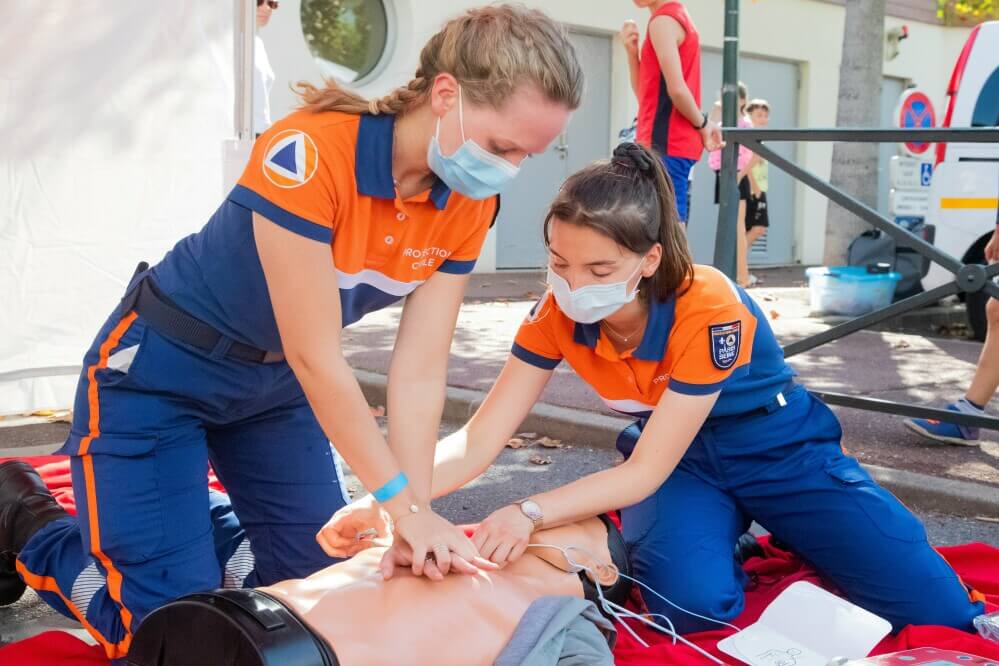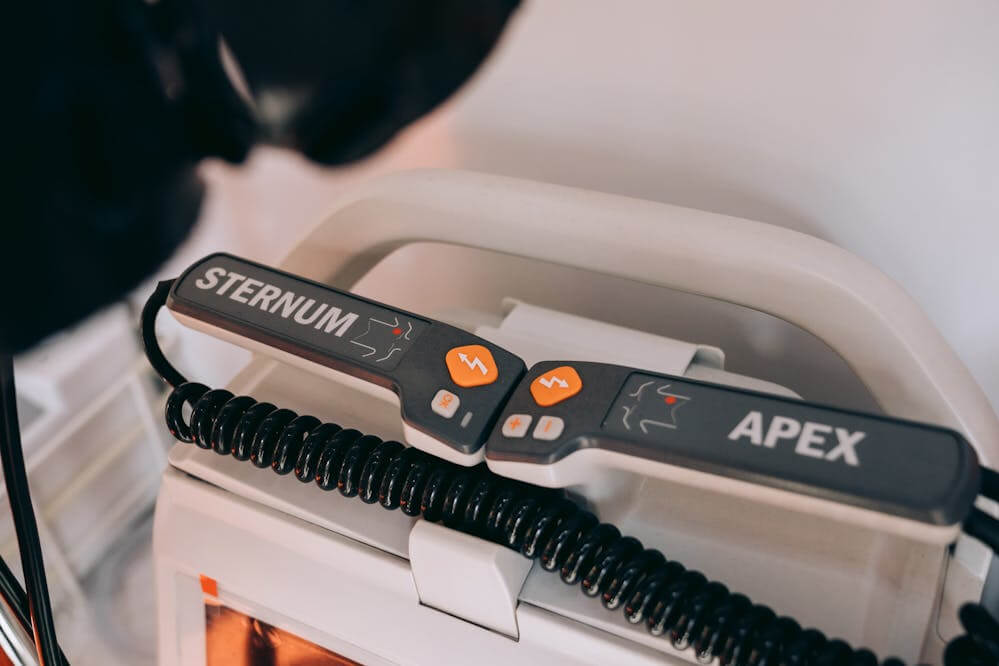Imagine finding yourself in a situation where someone nearby suddenly collapses, stops breathing, and their heart stops beating. In those crucial moments before medical help arrives, knowing how to perform CPR can be the decisive factor between life and death. Shockingly, more than 356,000 out-of-hospital cardiac arrests occur annually in the U.S., and nearly 90% of them are fatal. Even more concerning is the fact that bystanders administer CPR about 40% of the time. As each minute without CPR reduces your chances of survival by 10%, the need for widespread CPR knowledge is critical.
Learning how to perform CPR is an essential skill that could help you save someone’s life. That’s why we invite you to join us as we provide you with a detailed guide on executing CPR on adults, children, and infants. Additionally, you will learn how to identify common mistakes to avoid during CPR, and more.
Understanding CPR
Cardiopulmonary resuscitation (CPR) is an emergency life-saving procedure used on someone with cardiac arrest. Cardiac arrest happens when the heart stops beating, causing the person to collapse, stop breathing, and lose consciousness. The way CPR works is that through chest compressions, you can facilitate blood and, to some degree, oxygen flow through the body to vital organs and the brain until a regular heartbeat returns.
A person may need CPR if they stop breathing in any of the following circumstances:
— A cardiac arrest or heart attack
— Suffocation
— A road traffic accident
— Smoke inhalation
— Near-drowning
— Choking
— Electrocution
— Suspected sudden infant death syndrome
— A drug or alcohol overdose
— Poisoning.
It’s important to remember that you must ensure that the victim isn’t responding to verbal or physical calls to attention before starting CPR.
Before You Start – Assessing the Situation

Before starting CPR, you must ensure the safety of the victim and everyone in the surrounding area. If there is any danger, remove the victim from the hazardous situation, but make sure not to put yourself or others at risk.
Next, assess whether the victim is responsive by tapping their shoulders and asking for their name loudly. Additionally, after 10 seconds, check if they are breathing normally or not breathing at all.
Call for help as quickly as possible or direct someone else to do so. Remember, the sooner you call for help, the faster the victim will receive professional medical assistance, which will increase their chances of survival.
The CPR Procedure

The CPR method varies depending on whether you’re administering it to infants, children, or adults. Here are the major differences in approach and the steps you must take to ensure proper CPR technique.
Performing CPR on adults and children
To better remember the basic steps of performing CPR on adults and children, you should use the CAB method, which stands for Chest compressions, Airway, and Breathing.
Here are the steps for performing CPR on adults and children above one year old:
— Kneel beside the victim and place them on their back on a firm, flat surface.
— Give the victim 30 chest compressions by placing your hands at the center of their chest with your shoulders directly over and locking your elbows. Use your body weight to press straight down two inches (five centimeters) at a rate of 100 to 120 compressions per minute. Moreover, the chest should return to its normal position after each compression.
— After opening the airway by tilting the head and lifting the chin, take two breaths. Then, pinch the nose shut, take a normal breath, and completely seal the victim’s mouth with your own. Each breath should last about a second, and ensure the chest is rising. Allow the air to exit before giving the next breath.
— Continue giving sets of 30 chest compressions and two breaths until a sign of life or until medical help arrives.
The difference between adult and child CPR is that with child CPR, you must press down three to four centimeters for more gentle chest compressions.
Performing CPR on infants
Performing CPR on infants under the age of one requires specific steps that you need to follow carefully:
— Begin CPR by placing them on their back on a firm, flat surface.
— Give 30 compressions by placing both thumbs (side-by-side) on the center of the baby’s chest, just below the nipple line. You must use the other fingers to encircle the baby’s chest toward the back to provide support. Use both thumbs simultaneously to press hard down and fast about 1.5 inches at a rate of 100 to 120 per minute. Make sure to allow the chest to recoil to its normal position after each compression. Alternatively, you can use the two-finger technique, which involves placing two fingers parallel to the chest in the center of the chest. You can use this technique if you can’t reach the depth of 1.5 inches.
— Open the airway to a neutral position by tilting the head and lifting the chin technique.
— Blow into the baby’s mouth two times for about a second. Make sure each breath makes the chest rise and allow the air to exit before giving the next breath.
— Give sets of 30 chest compressions and two breaths until you notice an obvious sign of life or medical help arrives.
Automated External Defibrillators (AEDs)

Automated external defibrillators, or AEDs, are medical devices used to help those experiencing sudden cardiac arrest. They can analyze the heart’s rhythm and, if necessary, deliver an electrical shock to help the heart re-establish an effective rhythm. AEDs can help you save someone’s life even if you’re not trained to use them, as they will guide you with voice prompts on how to use them safely. The steps to using an AED include:
— Attaching the AED and following the prompts
— Continuing CPR until the AED is turned on the pads attached
— Placing the AED pads as instructed and making sure they don’t touch each other
— Ensuring no one is touching the victim while the shock is being delivered.
Remember that a standard adult AED and pads can be used on children over eight years old. However, for children younger than eight, it’s best to use pediatric pads and an AED with pediatric capability. If a pediatric AED is not available, you can still use the adult AED. But it’s important to note that you shouldn’t use an AED on children under one year old.
Common Mistakes to Avoid During CPR
Here are the most common mistakes you must avoid when performing CPR:
— Not tilting the victim’s head: A common mistake is not tilting the head before delivering rescue breaths. Proper head positioning is critical for the airway to stay open, allowing air to pass through to the lungs.
— Bending your arms: Keep your arms straight when applying proper force to chest compressions, but avoid locking your elbows out.
— Shallow compressions: To make chest compressions effective, press down at least two inches. Don’t be afraid to apply enough force, as chest compressions rarely result in chest or rib damage.
— Leaning on the victim: Allowing the chest to recoil fully between compressions is essential. Therefore, take your weight off the victim between compressions to allow the chest to expand fully.
Proper CPR technique involves administering chest compressions until medical professionals arrive at the scene. Although this may require performing chest compressions for an extended period, it is crucial to do so accurately.
Special Considerations in CPR
Performing CPR requires special considerations, particularly in unique situations such as drowning, choking, and electrocution.
If someone is drowning, the first step is to ensure their safety. Once the person has been safely removed from the water, you should check for responsiveness. If they are not responsive, lay them on a firm surface and start chest compressions. Before you start rescue breaths, it’s crucial to open their airways. Drowning victims may have water in their airways, which can make it difficult for them to breathe. To open their airways, place one palm on their forehead and tilt their head back. Then, use your other hand to lift their chin gently.
Clearing the airways is also crucial for choking victims, which you can do so by performing the Heimlich maneuver (using abdominal thrusts to clear the throat). Remember to never sweep an object you can see; you can risk pushing the blockage deeper into the airway. If the object is removed, but the person has no pulse, begin CPR with chest compressions.
Meanwhile, when helping electrocution victims, the first step you must take is disconnecting the electrical source or turning off the power supply. If you can’t safely disconnect it, you must use a non-conductive object to move the victim. As electrocution victims can go into shock, it can manifest as pale, clammy skin, rapid breathing, and confusion. If they’re in shock, keep them lying down while waiting for medical help. However, if they’re unresponsive, you can begin CPR.
The Bottom Line
CPR is a life-saving procedure that can significantly improve someone’s chances of surviving a heart attack, accident, or trauma. If you happen to witness a situation that requires CPR, make sure to call 911 immediately and check if the person is responding to verbal or physical stimuli before starting CPR. The steps for administering CPR vary depending on whether the victim is an adult, child, or infant; however, the cycle of chest compressions and rescue breaths remains the same.
Therefore, we encourage you to take Red Cross CPR training classes or find CPR and first aid training classes through the American Heart Association. Participating in a CPR course will take only a few hours of your day, but it can help you change someone’s life forever.
Frequently Asked Questions (FAQs)
Can CPR be performed on someone with a pacemaker?
Yes, you can perform CPR if the victim has a pacemaker. Pacemakers are usually on the far left or right sides of the chest, so performing CPR doesn’t affect the device.
What should I do if the victim starts breathing during CPR?
If the victim starts showing signs of life, such as normal breathing, responsiveness, or coughing, you should stop giving CPR.
How do I perform CPR on someone who is pregnant?
To perform CPR on a pregnant victim, you must first lay them on their back on a flat and hard surface. With each compression, you should push their chest down 2 inches (5 centimeters) and perform compressions at a rate of 100-120 beats per minute.
Should I perform CPR on someone who has been electrocuted?
Yes, you should perform CPR on someone who has been electrocuted if the victim is unresponsive and not breathing normally. Before starting chest compressions, turn off the source of electricity; if not possible, use a nonconducting object made of wood, plastic, or cardboard to move the source away.